If cheese and bread are your love language, you’re going to fall hard for this Pandebono recipe. These little Colombian breads are fantastically cheesy, irresistibly tender and fluffy, and surprisingly easy to make!
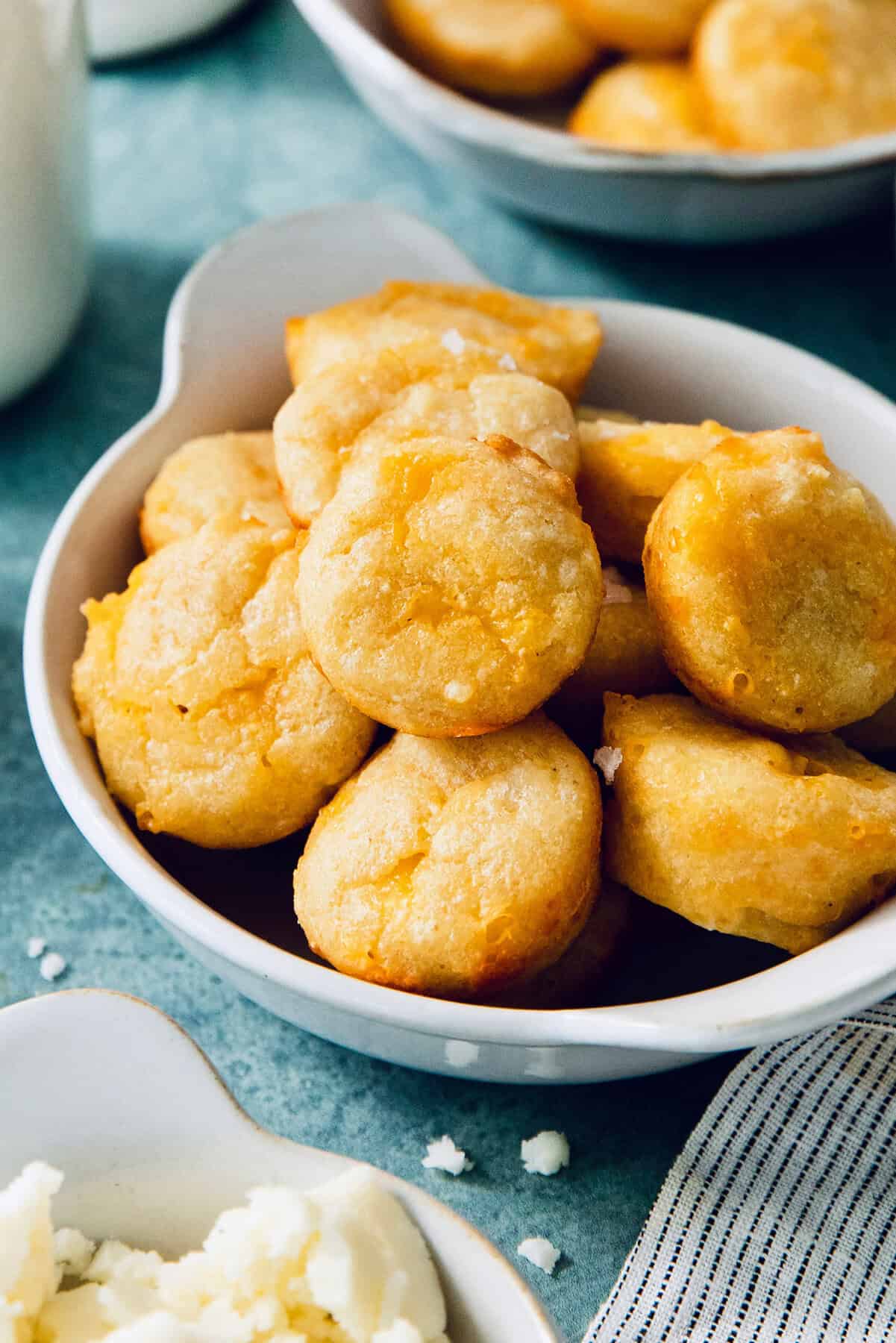
Pandebono (or pan de bono — it can be written both ways) is a classic Colombian bread. It’s made from cassava flour and cheese, and it has a soft, tender, and slightly chewy texture. If you’ve ever had pão de queijo at a Brazilian steakhouse, you’ll notice some similarities — and pandebono is equally irresistible!
Why You’ll Love This Pandebono Recipe
If you’ve never had pandebono before, let me convince you! Here’s why you’re going to love this recipe:
- Naturally gluten-free. Pandebono is gluten-free by default since it’s traditionally made with cassava flour. Our pantry has been stocked with cassava flour since last fall, when our family started experimenting more with gluten-free recipes. We picked up on this recipe after having spent a day in Cartagena, Colombia on a cruise stop with Princess Cruises.
- Double the cheese. A combination of cheddar and queso fresco delivers lots of cheesy flavor in every bite — and if you eat these fresh out of the oven (and you definitely should!), you get that melty cheese factor too.
- A fun twist that makes this SO EASY. Although the “pan” in pandebono means bread, this is not a typical yeast bread recipe that requires multiple rises and rests, and kneading. And to make this even easier, I created this recipe using a mini muffin pan, bypassing the traditional method that has you rolling individual dough balls!
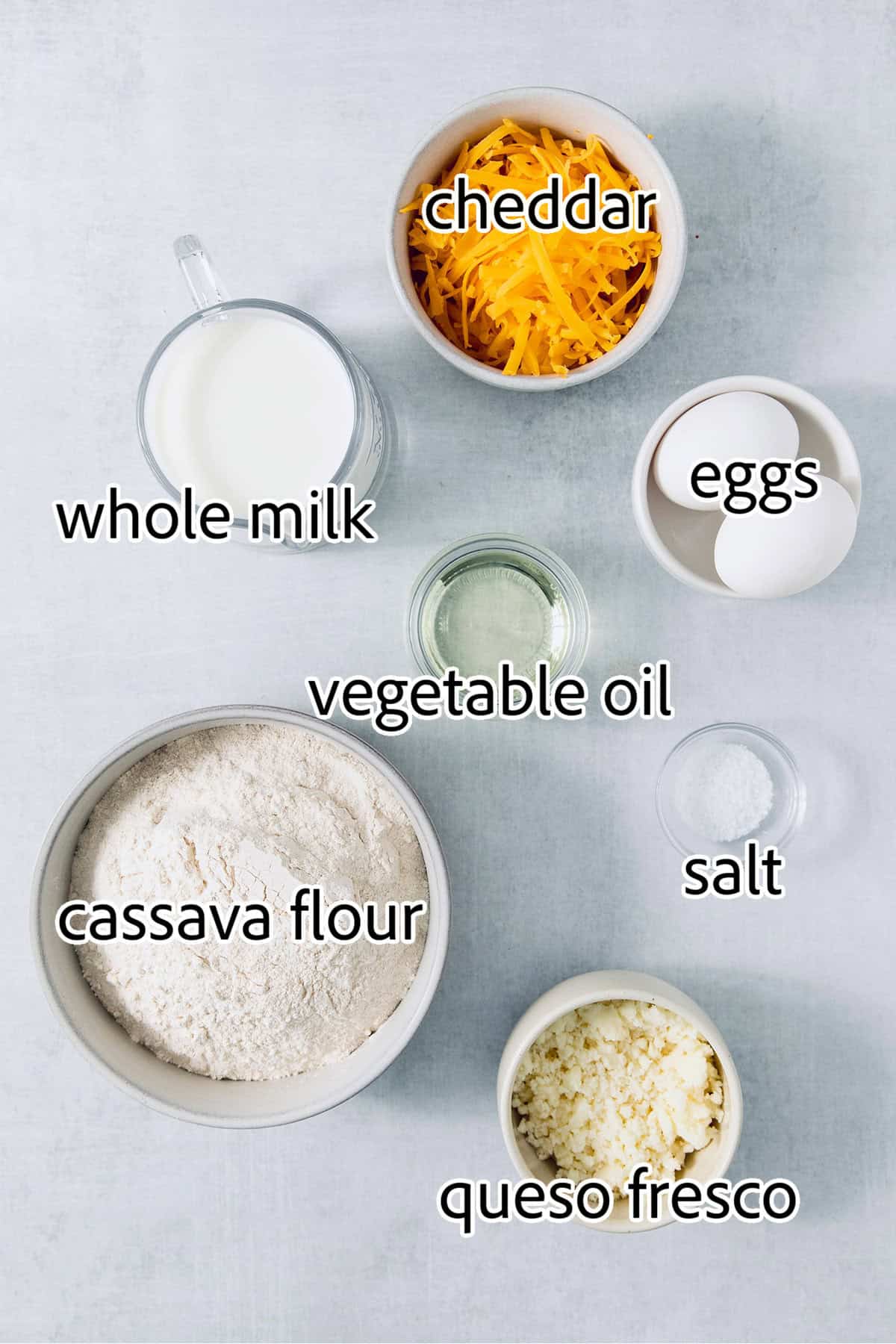
What You’ll Need
Here’s what you’ll need to make pandebono. Scroll to the printable recipe card at the bottom of the post for exact ingredient amounts.
- Whole milk – This adds moisture and richness.
- Vegetable oil – Canola oil also works. The oil keeps pandebono fresh and soft.
- Eggs – For binding the dough, plus rich flavor and moist texture.
- Cheese – I use a combination of queso fresco and shredded medium cheddar, which are easy to find in the US. Traditionally, this recipe would be made with Quesito Colombiano, a creamy, mild, semi-soft white cheese that’s made with 100% real milk.
- Salt – I use kosher salt.
- Cassava flour – This gives the bread a soft yet coarse texture.
What Is Cassava Flour?
Cassava is a root vegetable, or tuber, that grows in tropical regions like Colombia, where pandebono originated. Also known as yuca, it has a starchy texture and flavor, somewhat similar to a potato. Cassava flour is a gluten-free flour made from this plant, with a fine, powdery consistency and a neutral flavor. But what makes it most notable is its elasticity, which is what gives pandebono its fantastic chewy texture. You really cannot substitute regular flour for the cassava flour in this recipe!
How to Make Pandebono
This is a brief overview of the steps involved in making pandebono. Scroll to the bottom of the post for the full, printable recipe card with exact ingredient amounts.
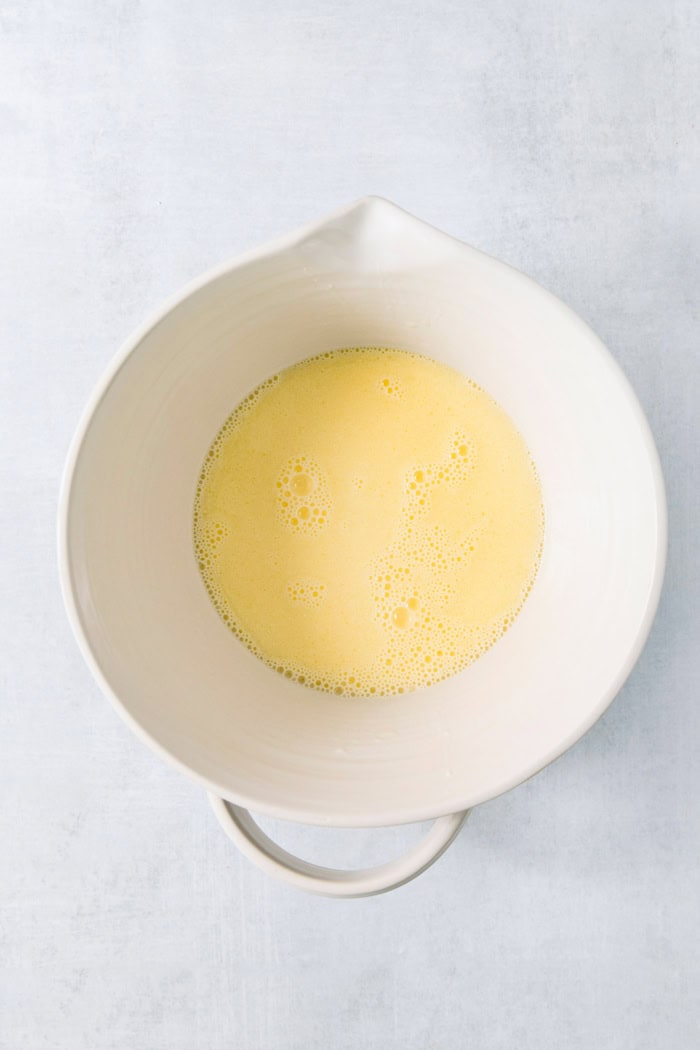
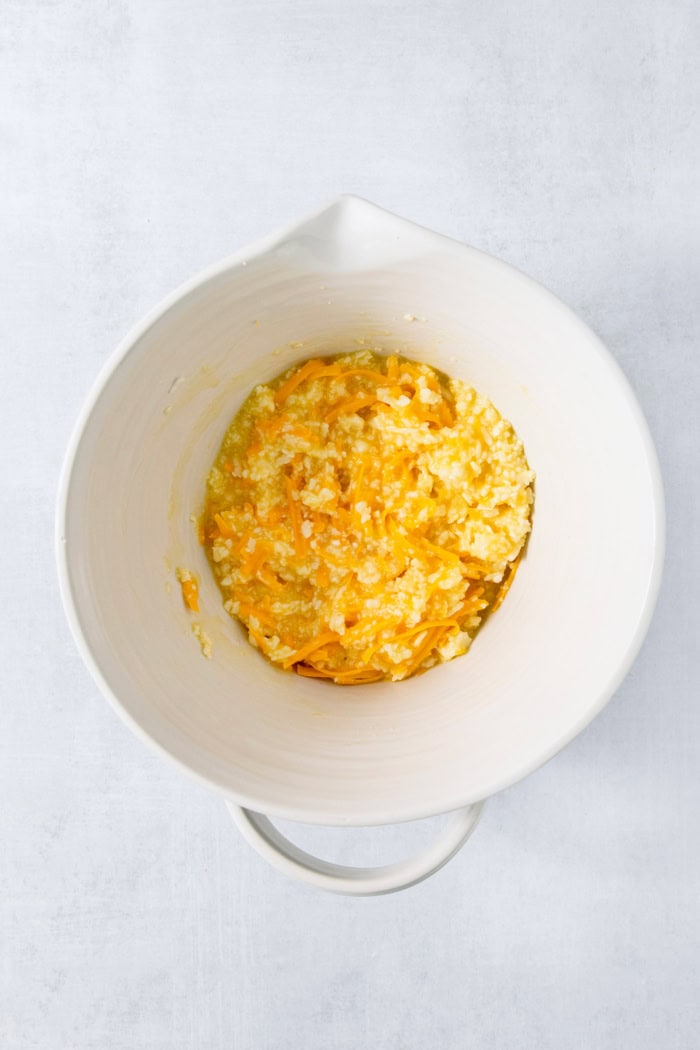
- Prepare. Preheat your oven to 350ºF and coat a mini muffin pan with non-stick spray.
- Mix the wet ingredients. Whisk the milk, oil, and eggs in a large bowl.
- Add the cheese. Fold the cheeses and salt into the wet ingredients.
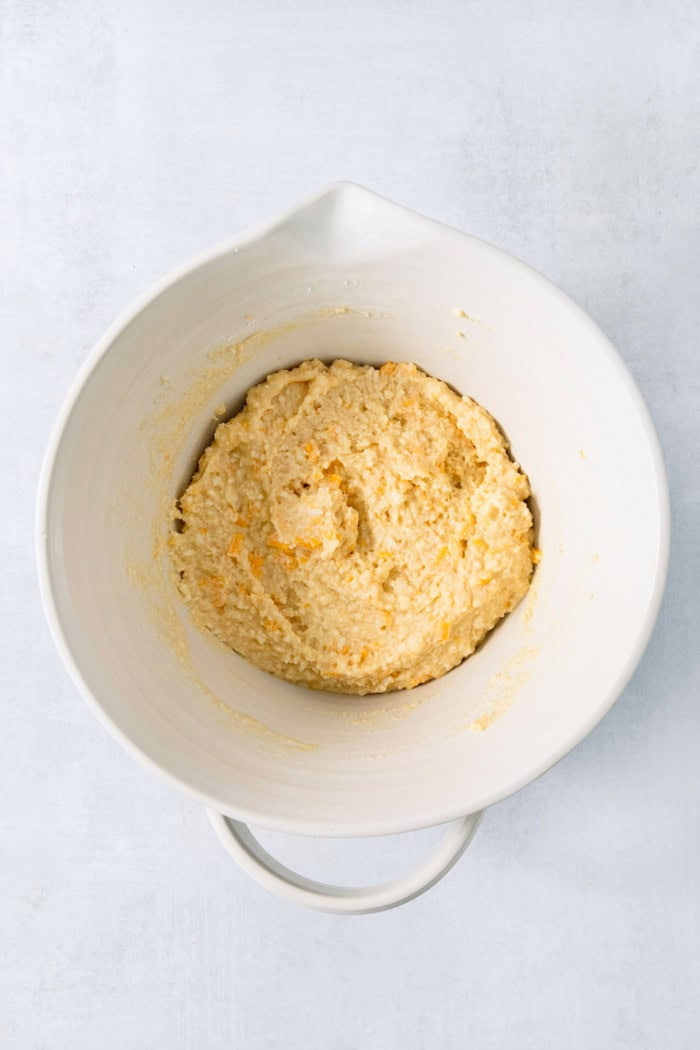
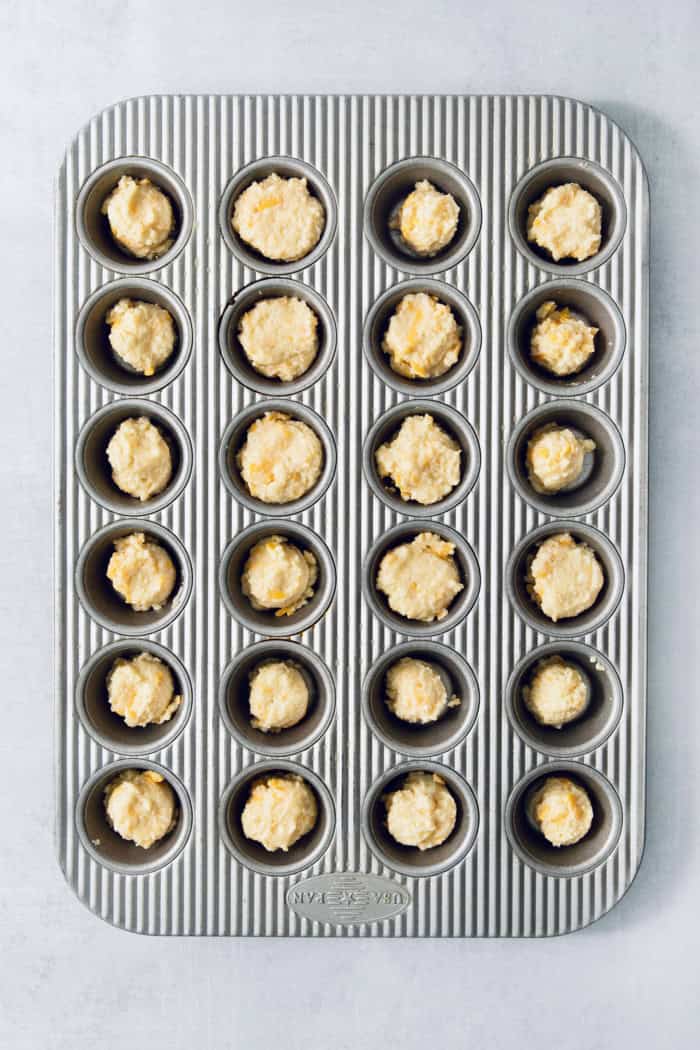
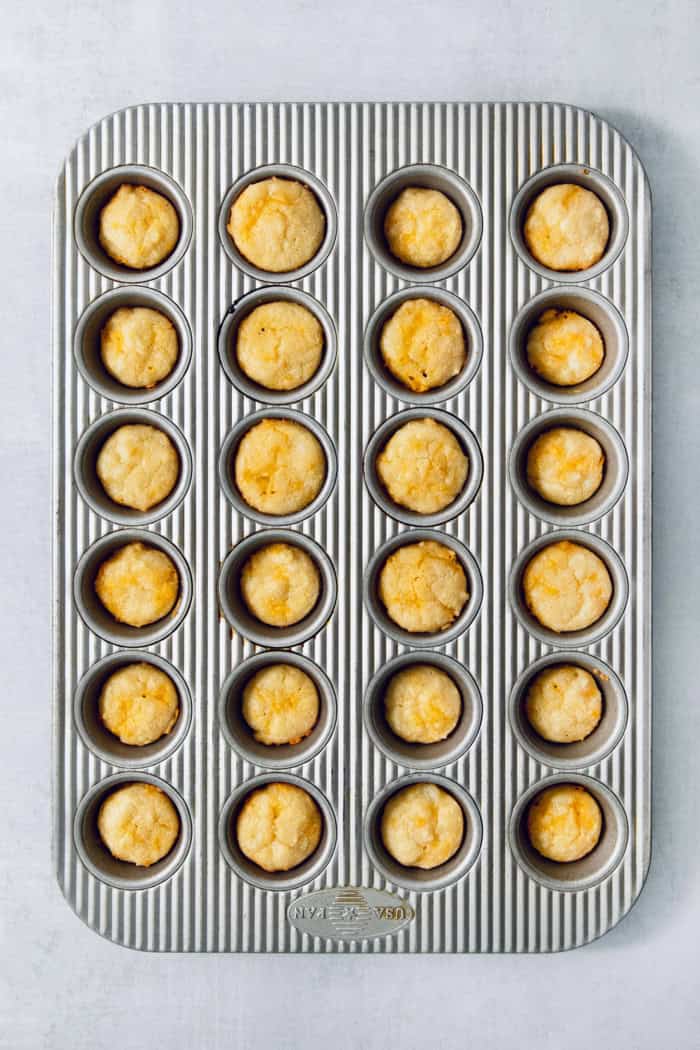
- Finish the batter. Stir in the cassava flour until no lumps remain.
- Bake. Divide the batter into the muffin pan, using about 2 teaspoons per cup. Bake for 12 to 15 minutes, or until the pandebono are golden brown.
- Cool. Transfer the pandebono to a wire rack to cool — or serve them warm!
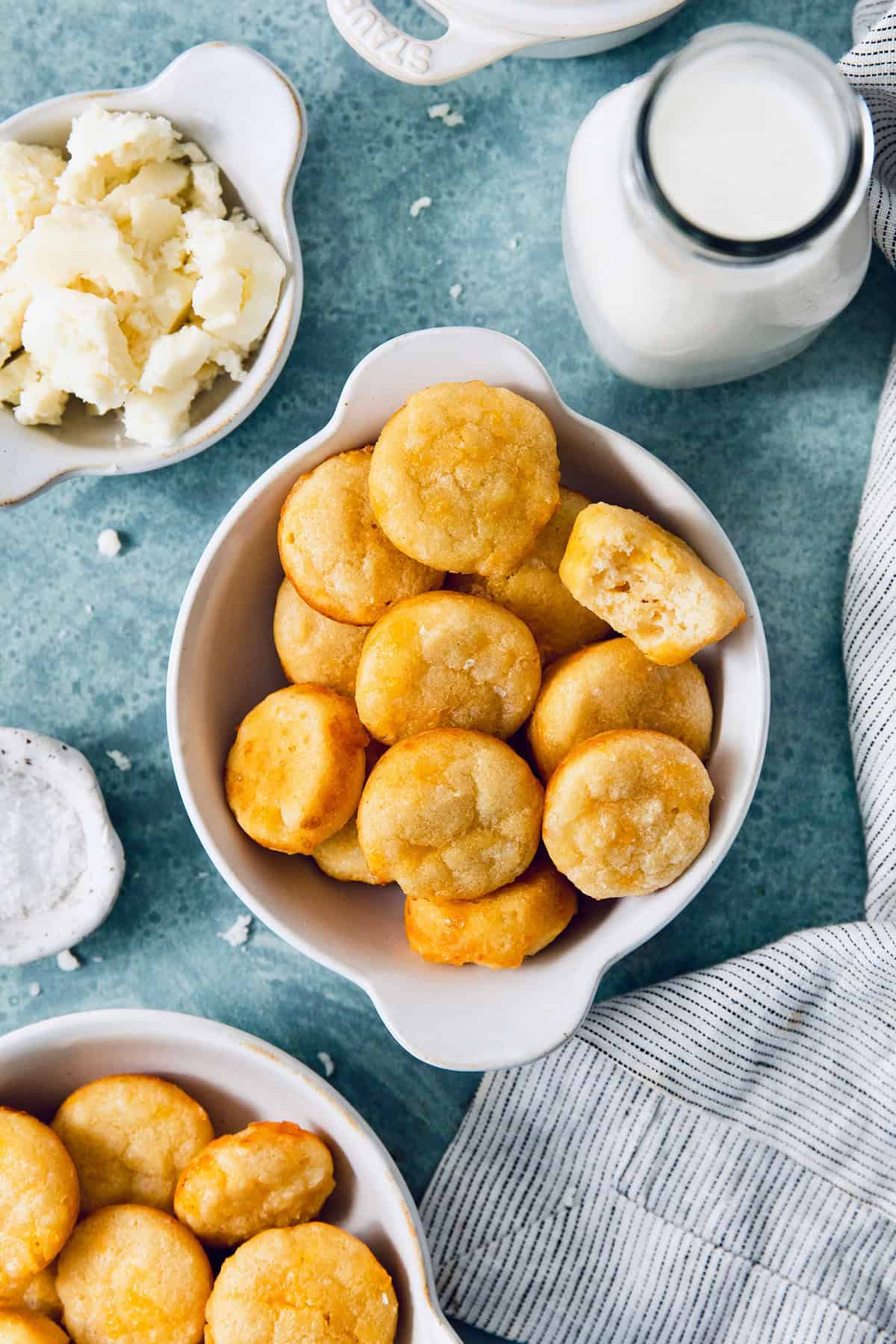
Tips & Variations
These simple tips will help you make sure your homemade pandebono turn out perfect.
- Shred your own cheddar. This is a worthwhile step. Freshly shredded cheese melts better and tastes better, without the anti-caking agents mixed into pre-shredded cheese. Get a good block of cheddar and grate it yourself.
- Switch up the cheeses. As long as you keep the amounts the same, you can try other types of cheese in pandebono. Cotija, feta, Parmesan, or even pepper jack would be delicious.
- Add spices or herbs. Although it’s not traditional, you can add fresh herbs, red pepper flakes, or spices to put your own spin on this recipe.
- Make larger pandebono. Use a regular sized muffin pan and place 3 tablespoons into each well and bake for 18-20 minutes. This will yield about 10 pandebono.
- Brush with butter. While not traditional, the pandebono are especially delicious if you brush them with melted butter and sprinkle them with flaky sea salt when they come out of the oven.
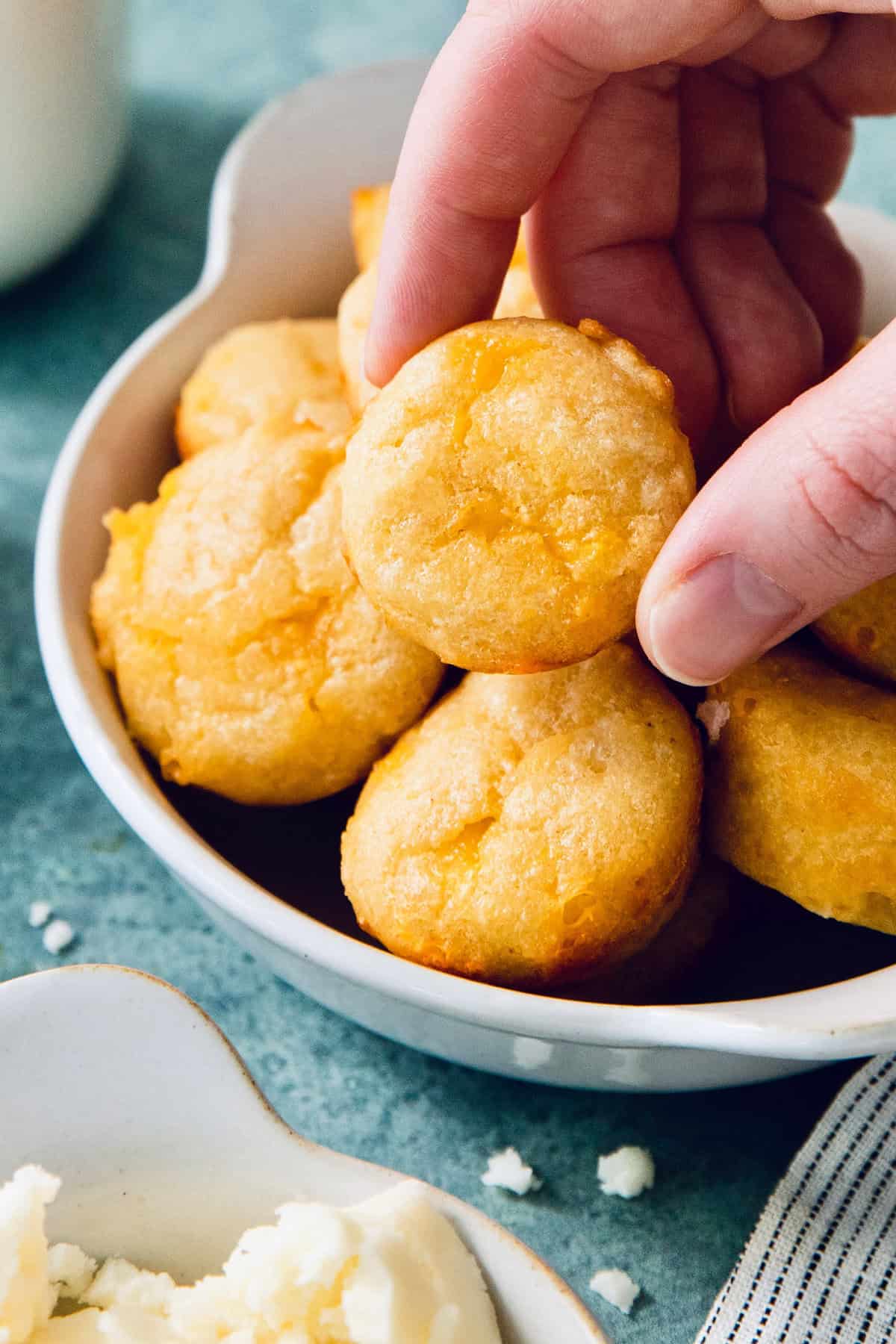
Serving Suggestions
Pandebono is traditionally served alongside a cup of coffee or Hot Chocolate as a breakfast or afternoon snack. You can also enjoy it with your favorite spread, such as butter or Strawberry Jam, or a sauce for dipping, like this Blueberry Sauce. The sweet and savory contrast is awesome!
How to Store
- Room temperature: Store any leftover pandebono in an airtight container at room temperature for up to 2 days.
- Freezer: To freeze, place the pandebono in an airtight container or freezer bag. They can be kept frozen for up to 2 months. Thaw at room temperature.
- To reheat: You can eat pandebono at room temperature, but I think they’re best enjoyed warm. Warm them up in the microwave or a 350ºF oven.
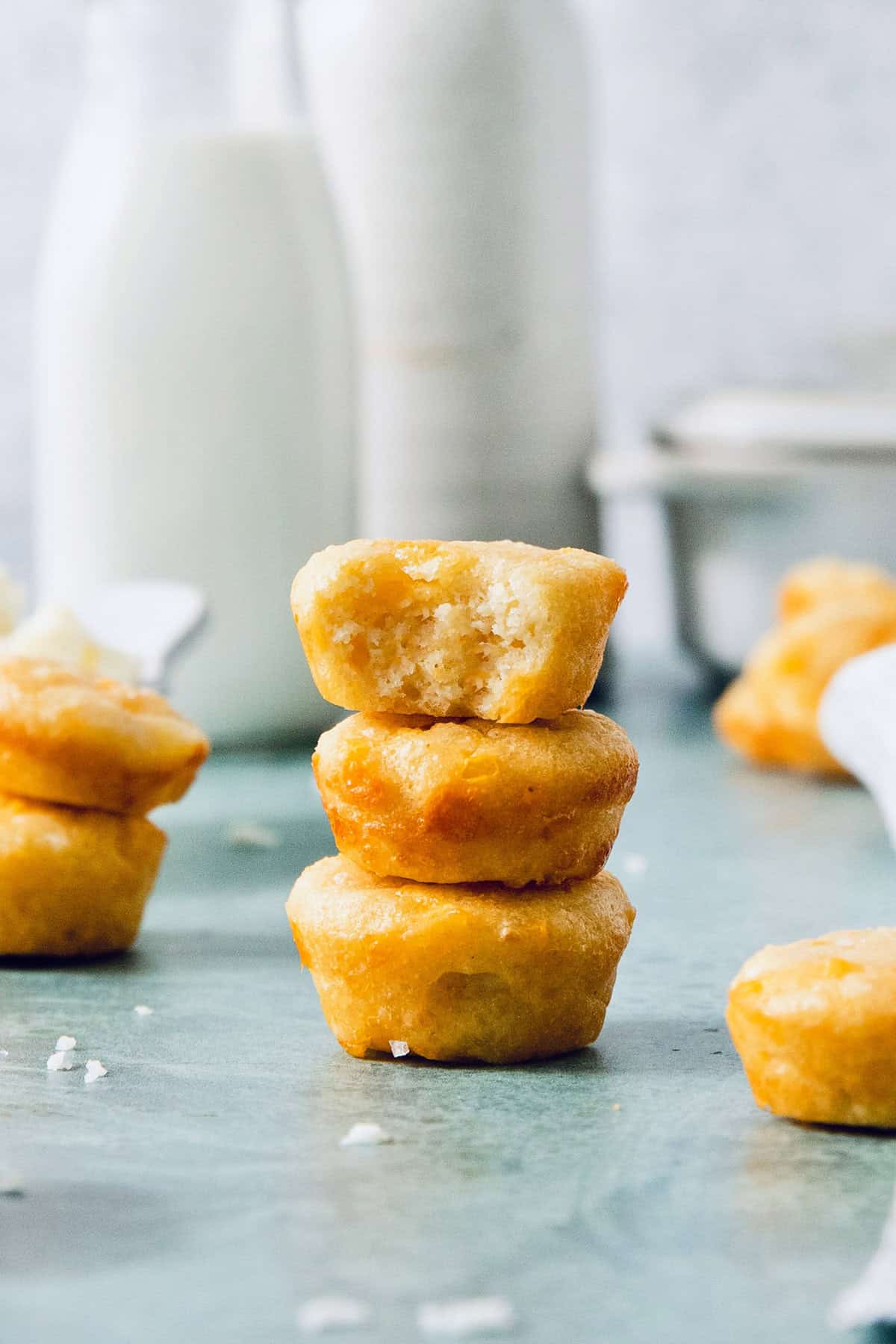
More Savory Bread Recipes
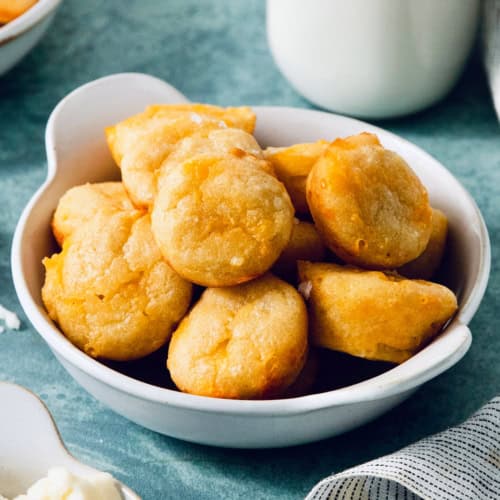
Pandebono
Ingredients
- ¼ cup whole milk
- ¼ cup vegetable oil
- 2 large eggs
- 5 ounces queso fresco, finely crumbled
- 2 ounces freshly shredded medium cheddar
- 1 teaspoon kosher salt
- 1 cup cassava flour
Instructions
- Preheat oven to 350°F and grease a mini muffin pan with nonstick cooking spray.
- In a large bowl, whisk together milk, vegetable oil, and eggs.
- Add cheddar, queso fresco, and salt. Use a rubber spatula to stir in the cheeses.
- Finally, add the cassava flour and stir until no dry lumps remain.
- Scoop out 2-teaspoon sized portions and place them in the greased muffin pan.
- Bake for 13-15 minutes, or until golden brown.
- Remove the pandebono from the muffin pans and place them on a wire rack to cool. Enjoy.


get new posts via email: